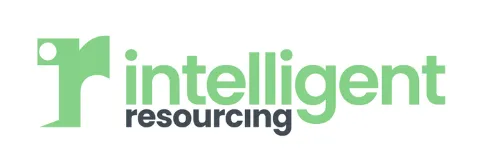
How to Work Smarter with Remote Teams: Slack Tips You’re Probably Not Using
Most businesses use Slack as a simple messaging tool, but few unlock its full potential. If you manage a remote or offshore team, you need more than just basic channels and @mentions. Slack can be a powerful productivity engine, automation hub, and even an alternative to email if used strategically.
At Intelligent Resourcing, we help businesses integrate offshore talent seamlessly, and one of the most common challenges we see is inefficient communication that leads to wasted time and misalignment. Slack can solve many of these problems when implemented effectively.
These lesser-known features, automation hacks, and workflow improvements will transform how your remote team operates and help you get more out of Slack.
Custom Workflows: Automate the Repetitive Conversations
Businesses often waste hours each week answering the same internal questions. Employees frequently ask about policies, access to shared files, and onboarding steps. Instead of repeating answers manually, Slack’s Workflow Builder can automate responses and streamline repetitive conversations.
How to set it up:
Navigate to Workflow Builder under the "More" menu in Slack’s sidebar.
Click "Create Workflow" and choose a trigger, such as a keyword or command.
Configure an automated response with the required information or link.
This is particularly useful for onboarding offshore employees who need quick access to company policies, processes, and resources. Using Workflow Builder ensures team members receive instant answers without waiting for a response from management. More details on setting up automated workflows can be found on Slack’s automation page.
Slack as a Search Engine: Retrieve Information Instantly
Many people waste time scrolling through messages trying to find critical information. Slack’s advanced search operators allow users to locate files, decisions, and project updates instantly.
Useful search operators:
from:@John → Find messages from a specific person
in:#sales-team → Search within a particular channel
has:link → Locate messages that contain links
before:2024-01-01 → Retrieve messages before a specific date
during:January → Find messages from a particular month
Instead of losing valuable time digging through old conversations, team members can use Slack as a fully functional search engine. A complete list of search commands is available in Slack’s documentation.
Replacing Status Meetings with Slack Automation
Many remote teams rely heavily on video meetings to keep everyone aligned, but unnecessary meetings are a productivity killer. Slack can reduce reliance on daily or weekly check-ins by automating standups and project updates.
How to automate standups:
Set it to prompt team members at a specific time each day.
Have team members submit quick updates in Slack instead of hopping on a call.
The bot compiles responses into a summary, so managers get a snapshot without a meeting.
For businesses with offshore teams in different time zones, automating standups allows employees to contribute updates on their own schedule, reducing friction and improving efficiency.
Using Slack as a Personal Task Manager Without Extra Apps
Slack is often seen as just a communication tool, but it can also function as a task manager. Instead of relying on third-party apps, Slack’s built-in reminder system helps keep track of to-dos and deadlines.
Useful reminder commands:
/remind me to check the sales report at 3 PM
/remind #marketing-team to post on LinkedIn every Monday at 9 AM
Hold Alt + Click on a message to set a reminder to revisit it later
Slack reminders create a simple, integrated to-do list that doesn’t require switching between multiple apps. More information on setting up reminders is available in Slack’s help centre.
Controlling Notifications to Stay Focused
Many people complain that Slack is too distracting. Constant notifications can lead to reduced focus and inefficiency, but this can be prevented by configuring Slack’s notification settings properly.
Fix #1: Use Notification Keywords to Filter Noise
Instead of muting entire channels, set notification keywords so you only get alerts when something relevant comes up.
How to do it:
Go to Preferences > Notifications > My Keywords.
Add words like “urgent,” “approval needed,” or your name.
Slack will only alert you when these terms appear in a message.
Fix #2: Automate Slack’s Do Not Disturb Mode
Most people manually enable "Do Not Disturb," but Slack allows for automated schedules.
How to set it up:
Click your profile and select "Pause Notifications."
Set a custom schedule, such as muting Slack between 10 PM and 8 AM.
Slack will automatically turn notifications on and off, so you don’t have to remember.
Adjusting notification settings is one of the easiest ways to reduce Slack fatigue while staying informed. More details on notification management can be found in Slack’s notification guide.
Creating a Knowledge Base in Slack
Instead of relying on external documentation tools, Slack can serve as a knowledge base for frequently accessed company resources. By using pinned messages and bookmarking links, teams can create an internal wiki within Slack.
How to use Slack as a knowledge base:
Pin important messages by hovering over them and selecting "Pin to Channel."
Use Slack bookmarks to save frequently shared links for quick access.
Link Slack channels to shared drives to centralise important documents.
This is particularly useful for businesses managing offshore teams, as it ensures everyone has easy access to critical documents without needing to request links manually.
Why Slack is a Competitive Advantage for Remote Teams
Slack is more than just a chat tool. It can be a powerful enabler of efficiency, reducing unnecessary meetings, improving knowledge sharing, and automating routine processes. Companies that use Slack strategically can increase transparency, speed up decision-making, and eliminate communication bottlenecks.
Key benefits of optimising Slack:
Cutting down time spent searching for old messages
Reducing reliance on repetitive meetings
Automating workflows to streamline internal operations
Improving offshore team alignment without micromanagement
Final Thought
Many companies use Slack at a surface level without taking advantage of its deeper capabilities. By incorporating workflow automation, smarter search techniques, and structured notification management, businesses can transform Slack from a simple chat tool into a productivity powerhouse.
Remote teams that optimise their Slack setup will spend less time on unnecessary meetings, reduce miscommunication, and operate more efficiently. Instead of just using Slack, businesses should look for ways to make it work for them.
Slack is only as powerful as the way you use it. By optimising workflows, automating repetitive tasks, and managing notifications effectively, businesses can turn Slack into a productivity powerhouse rather than just another chat app.
If your remote team isn’t working as efficiently as it should, it’s time to rethink your approach. At Intelligent Resourcing, we help businesses scale smarter by integrating top-tier offshore talent with the right systems in place.
Don’t let poor communication hold your business back. Get in touch with Intelligent Resourcing today and build a remote team that actually drives growth.





